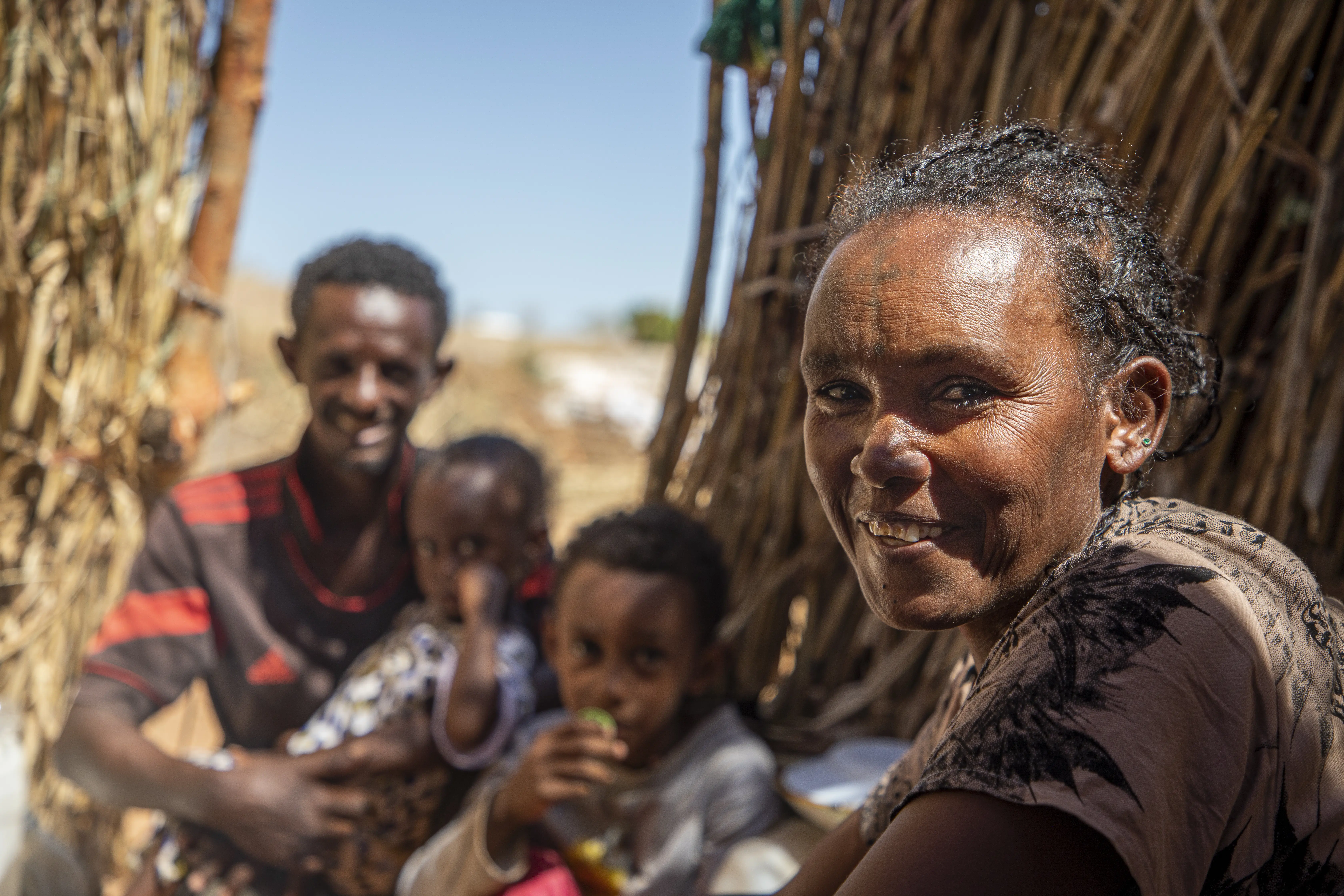Ethiopia Crisis
Ethiopia is grappling with a multifaceted crisis fueled by conflict and climate-related challenges.
Photo: @UNHCR/Hazim Elhag
In 2024, 21.4 million people are in need of humanitarian assistance. Please help provide emergency aid.

Emergency Shelter

Essential Items
Protection Services
What’s happening in Ethiopia?
Ethiopia is grappling with a multifaceted crisis fueled by conflict and climate-related challenges. Since the end of a two-year civil war in the Tigray region, Ethiopia continues to grapple with armed conflicts and insecurity in parts of the country. Climate change also presents a serious challenge. Both flooding and droughts in different parts of the country have drastic effects on vulnerable populations. These environmental events disproportionately harm rural areas, where 85% of the population relies on agriculture for their livelihoods. The combined effects of conflict and climate-related shocks have increased the number of people requiring humanitarian assistance to 21.4 million.
As of September 2024, 4.8 million people are displaced within the country. This total includes more than 2.3 million children whose lives have been profoundly affected by violence and instability.
Ethiopian Food and Hunger Crisis
Overlapping crises including conflict, drought and inflation have severely affected the ability of communities to cope with shocks. The combination of widespread malnutrition, severe water shortages, and disease outbreaks like malaria, measles, and cholera, has intensified food insecurity across the country, forcing millions to rely on humanitarian aid for survival.
An estimated 15.8 million people require food support in 2024. This includes around 4 million internally displaced people, who have had to leave their homes due to the 2020-2022 conflict in the north and severe drought in the south and southeast.
How can I help people in Ethiopia?
The easiest way to give is through our secure online donation form. You can give monthly or one-time on behalf of an individual or a corporation. Your donation will help refugees and internally displaced people who need it most – our donors make our work possible. All contributions to the UNHCR are 100% tax-deductible.
What is UNHCR doing to help?
UNHCR is addressing Ethiopia’s crisis through a comprehensive response that targets immediate needs and promotes long-term recovery. In 2024, UNHCR has extended assistance to 600,000 refugees and asylum-seekers while ramping up support for internally displaced populations. Over 1.2 million people in the most affected areas have received emergency aid, including food, clean water, and shelter. UNHCR has also implemented child protection initiatives benefiting 500,000 displaced children by providing education and psychosocial support.
Efforts to improve climate resilience are underway, with programs helping 200,000 farmers recover from drought and restore food security. UNHCR’s interventions aim to address urgent humanitarian needs while fostering resilience and recovery. However, sustained support remains essential to help families rebuild their lives.
Where can I access the latest data and reports?
Ethiopia Operations—for latest on UNHCR’s relief work to protect displaced people inside Ethiopia.
Did you know that Ethiopia is home to over 182,000 Eritrean refugees across the country, equal to 22% of the total refugee population in Ethiopia?
“We were in our house when soldiers started shooting at each other. Our house started burning. We ran away and started walking to Sudan. It took three days. We slept at night in the forest. The Sudanese gave us things to eat and a place to sleep.”
Ethiopian refugee, Ngesti Gudamadhen, 28, is living with her husband, Asmelash Alemayoh, 33, their son Arbil Asmelash, 7, and their daughter Adiam Asmelash, 2, in a shelter in Um Rakuba camp, Sudan. She is a volunteer teacher in the camp.
Photo: © UNHCR/Hazim Elhag

“We were in our house when soldiers started shooting at each other. Our house started burning. We ran away and started walking to Sudan. It took three days. We slept at night in the forest. The Sudanese gave us things to eat and a place to sleep.”
Ethiopian refugee, Ngesti Gudamadhen, 28, is living with her husband, Asmelash Alemayoh, 33, their son Arbil Asmelash, 7, and their daughter Adiam Asmelash, 2, in a shelter in Um Rakuba camp, Sudan. She is a volunteer teacher in the camp.
Photo: © UNHCR/Hazim Elhag
Please help refugee families and internally displaced people in Ethiopia.
Please help refugee families and internally displaced people in Ethiopia.


